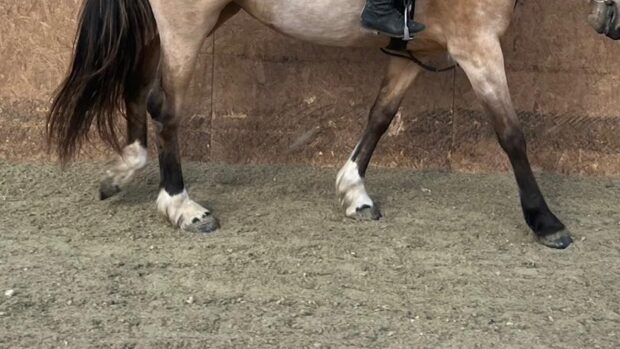A study of injuries in racehorses has revealed that geldings are three times more likely to suffer superficial digital flexor tendon (SDFT) damage than mares or stallions.
The research, conducted in Japan, demonstrated a string of other risk factors for SDFT injury, with horses finishing 10th or lower in a race (2.5x) and a gap of more than 90 days between runs (1.75x) among the most significant.
The report by Yoko Ikeda, Akikazu Ishihara, Masahiko Nakajima and Kazutaka Yamada, published in the Japanese Journal of Equine Science last month, looked at SDFT injuries as they are very common in racing thoroughbreds. Musculoskeletal problems account for the retirement of 76% of racehorses in Japan, 46% of these down to SDFT problems.
Taking data from the medical records of a racetrack, researchers discovered a list of risk factors for tendinopathy that also included “sloppy” (heavy) tracks (1.7x), races shorter than 1300m (1.40x) and horses placed eighth or lower in the betting (1.49x).
One risk factor specifically associated with the characteristics of the racehorses themselves was bodyweight, with those sustaining SDFT injuries significantly heavier than the control horses. Those above 470kg were most at risk.
An interesting finding was that when there was a decrease in bodyweight since a previous race, the SDFT tendinopathy risk was also “significantly high”.
“This result suggested that muscle loss or too much training load before the race also worsens general conditions,” the researchers said. “Hence, these horses experience muscle fatigue earlier than fit horses, resulting in increased tendon forces toward the end of race and thus a risk of SDF tendinopathy.”
They cautioned that the data for bodyweight could be conflicting, however.
“Decreased bodyweight could not only be the result of muscle loss or excessive training but also be the result of intentional weight reduction during training to improve race performance. Our study did not include any survey to assess the intent of previous trainings, and our results were not sufficient to draw any conclusions with respect to these arguments,” they added.
Continues below…

Riders think they know more than they do, research shows
‘This over-confidence can have serious consequences on the welfare of horses, and could affect the mental health of riders’

Top scientists make breakthrough in stem cell research for tendon injuries
Researchers are hopeful the breakthrough could lead to new and improved treatment methods for tendon injuries in horses

Subscribe to Horse & Hound magazine today – and enjoy unlimited website access all year round
While one previous study contradicted some findings — showing mares, firm track surfaces and older horses to be high-risk factors — the results of this research clearly showed colts and geldings to be at “significantly higher risk”.
“Such a phenomenon would, in turn, demonstrate that the lowest risk of SDF tendinopathy is in female horses, indicating that the slower gait velocity in female horses could potentially reduce the tendon strains,” the report said.
It also highlighted the problem of accumulated micro-damage caused by short, fast races and recommended that in order to prevent tendon injuries, a sloppy track should be avoided and that the safest runs were long-distance and with a slower speed.
The study involved 292 racehorses diagnosed with SDFT tendinopathy between 2011 and 2015. Two control horses were matched to each case horse by randomly selecting from those who were not included as case horses, had the same trainer, had started a race within six months of injury in case horses and were of the same age as the case horses.
“Further investigations with larger sample sizes are warranted to clarify the positive or negative impact of decreases in body weight and the length of the race interval on the risk of SDF tendinopathy,” the report concluded.
Would you like to read Horse & Hound’s independent journalism without any adverts? Join Horse & Hound Plus today and you can read all articles on HorseandHound.co.uk completely ad-free




